Published on 22 Mar 2024 | Last updated on 20 June 2024
Celebrating Diversity: Exploring the Fascinating World of Nose Shapes Across Ethnicities
- ByMedical Content Team
- Medically Reviewed byDr. Sabine Kulhanek
Fact checked
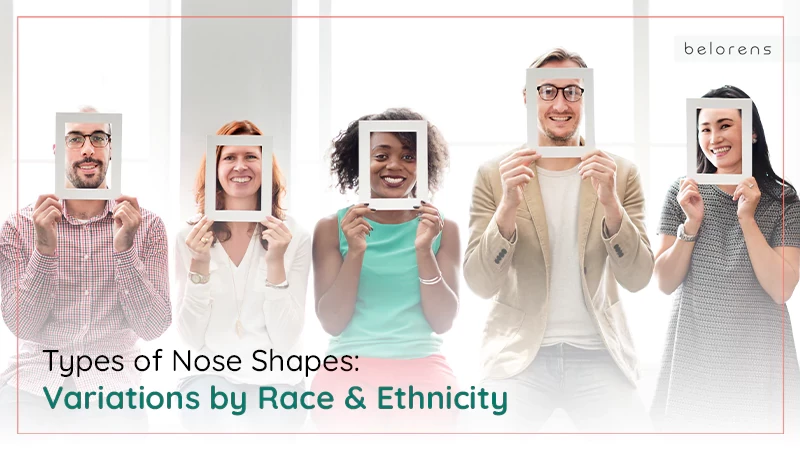
- Discovering Different Nose Shapes: Understanding Your Unique Facial Feature
- Nose Shapes in Different Ethnicities
- African Nose Shape
- Asian Nose Shape
- East Asian Nose Shape
- European Nose Shape
- Caucasian Nose Shape
- Native American Nose Shape
- Middle Eastern Nose Shape
- Arab Nose Shape
- Latino Nose Shape
- Last Word
- FAQs
In the tapestry of human existence, diversity is one of the most remarkable and awe-inspiring threads. One intriguing aspect of this diversity lies in the unique and varied shapes of our noses. From the aquiline noses of the Roman era to the button-like cuteness of a snub nose, the nose serves as a testament to the exquisite beauty found within different ethnicities.
In this blog post, we embark on a journey to explore the rich spectrum of nose shapes across various ethnicities. We dive into the fascinating world of human biology and cultural heritage, uncovering the remarkable variations that make each ethnic group distinctive and captivating. Join us as we celebrate the diversity of human nose shapes, first by detailing various shapes of noses regardless of race and ethnicity and then touching on the typical nose shape of people from different races and ethnicities.
Discovering Different Nose Shapes: Understanding Your Unique Facial Feature
Noses come in a mesmerizing array of shapes, each with its own distinct character and allure. Regardless of ethnicity, the human population exhibits a diverse spectrum of nose shapes that contribute to the beauty and uniqueness of every individual. Let's now delve into the fascinating world of nose shapes, exploring their unique characteristics and the stories they tell.
Roman or Aquiline Nose
- The Roman or aquiline nose features a prominent, high bridge and a downward curve, reminiscent of the noses seen in ancient Roman sculptures.
- This nose shape is often associated with strength, nobility, and a sense of regality.
The Roman nose, also known as the aquiline nose, is a distinct and prominent nose shape that draws inspiration from ancient Roman sculptures and art. It is characterized by a high and prominent nasal bridge that creates a noticeable curve, often leading to a downward slope.
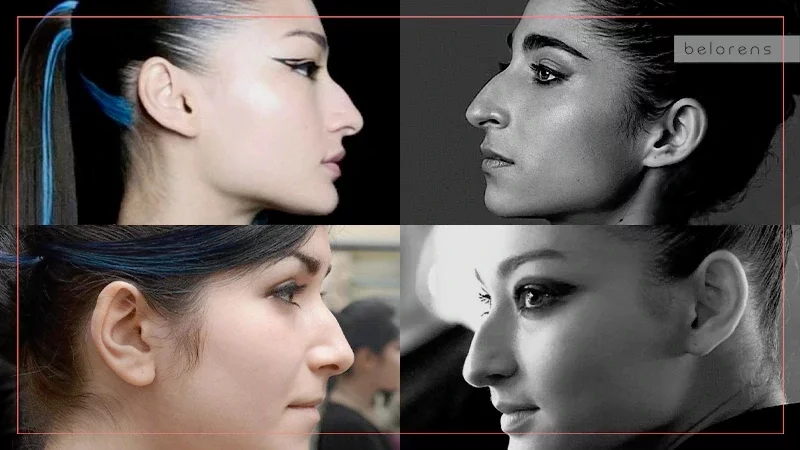
This nose shape has been associated with strength, nobility, and regality throughout history.
The defining feature of the Roman nose is its prominent bridge. It typically has a well-defined ridge that extends from the root of the nose to the tip, creating an elegant and commanding profile. The downward curve of the nose adds a sense of regal sophistication and adds to the overall prominence of the facial features.
The Roman nose has been admired for its association with strength and power. In ancient Rome, this nose shape was often depicted in sculptures of emperors, military leaders, and important figures. It was believed to be a symbol of authority and leadership.
From a visual perspective, the Roman nose creates a sense of balance and symmetry on the face. Its strong and pronounced structure can enhance the facial profile, giving a sense of aesthetic harmony. The distinctiveness of the Roman nose often draws attention and can contribute to an individual's unique and memorable appearance.
It is important to note that while the Roman nose is often associated with European and Mediterranean ethnicities, it can be found across different races and ethnic backgrounds. The beauty of nose shapes lies in their diversity, showcasing the unique characteristics and heritage of individuals from various cultural backgrounds.
Whether appreciated for its historical significance, aesthetic appeal, or association with leadership, the Roman nose stands as a testament to the rich tapestry of nose shapes that add to the beauty and individuality of the human face.
Greek Nose
- The Greek nose is characterized by its straight and narrow bridge, leading to a well-defined and balanced tip.
- Inspired by ancient Greek sculptures, this nose shape is often regarded as a symbol of harmony and aesthetic perfection.
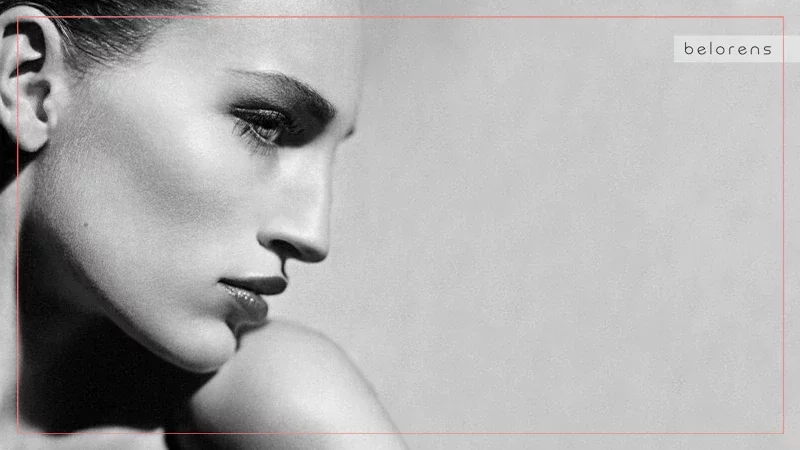
The Greek nose is a nose shape that draws inspiration from ancient Greek sculptures and is often associated with a sense of aesthetic perfection and harmony. It is characterized by a straight and narrow bridge, leading to a well-defined and balanced tip.
The defining feature of the Greek nose is its straight bridge. Unlike noses with prominent curves or bends, the Greek nose exhibits a straight line from the root to the tip. This straightness creates a sense of symmetry and balance, contributing to its reputation for aesthetic appeal.
The narrowness of the Greek nose adds to its refined and elegant appearance. The bridge of the nose is often slender and well-proportioned, complementing the other features of the face. The well-defined tip of the Greek nose further accentuates its graceful and harmonious design.
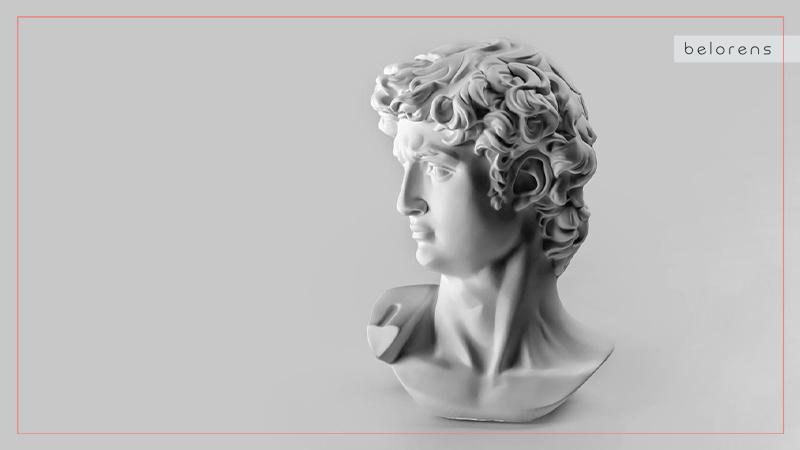
In ancient Greek art, the Greek nose was considered a hallmark of beauty and represented an idealized form. It was believed to embody qualities such as grace, intelligence, and
proportionality. This perception has transcended time, and the Greek nose continues to be admired for its aesthetic qualities in contemporary society.
While the term "Greek nose" is commonly used, it is important to note that this nose shape is not limited to individuals of Greek descent. It can be found in individuals from various ethnic backgrounds, as nose shapes can vary within populations.
The beauty of the Greek nose lies in its timeless elegance and balance. Its refined proportions and straight bridge create a sense of harmony on the face, enhancing facial aesthetics. Whether it graces the features of an individual of Greek heritage or someone from a different background, the Greek nose serves as a reminder of the enduring allure and appreciation for classic beauty.
Snub Nose
- The snub nose is small, short, and slightly upturned, creating a button-like appearance.
- Often perceived as cute and youthful, this nose shape exudes a sense of charm and approachability.
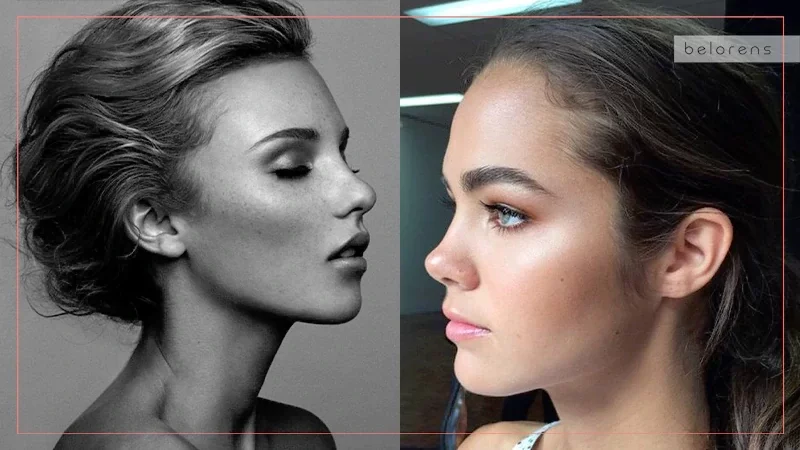
The snub nose, also known as a button nose, is a small and short nose shape that is characterized by a slightly upturned tip. It is often associated with a cute and youthful appearance, adding a touch of charm and approachability to one's facial features.
The defining feature of the snub nose is its small size and short length. The nose is compact, with a rounded shape that doesn't extend far from the face. The upturned tip gives it a subtle upward tilt, creating a button-like appearance that draws attention and adds a sense of playfulness.
Snub noses are often perceived as cute and endearing. Their petite size and delicate proportions can evoke a sense of youthfulness and innocence. This nose shape has a soft and gentle quality that can contribute to an overall friendly and approachable facial expression.
The snub nose has been celebrated in various cultures and has been admired for its adorable and attractive appeal. It can add a touch of whimsy and sweetness to the face, making it a distinctive feature that stands out.
It's important to note that snub noses can be found across different ethnicities and races, showcasing the diverse beauty of individuals. While some individuals may naturally have a snub nose shape, it can also be created or enhanced through rhinoplasty.
The snub nose serves as a reminder that beauty comes in all shapes and sizes. Its petite and upturned nature adds character and uniqueness to facial features, allowing individuals to embrace their own personal charm. Whether it be its cute and playful appearance or the sense of approachability it exudes, the snub nose continues to capture the attention and admiration of many.
See the difference: before and after rhinoplasty photos
Celestial or Turned-Up Nose
- The celestial or turned-up nose showcases a pronounced upward tilt at the tip, giving it a playful and perky look.
- This nose shape adds a touch of whimsy and uniqueness to one's facial features.
-
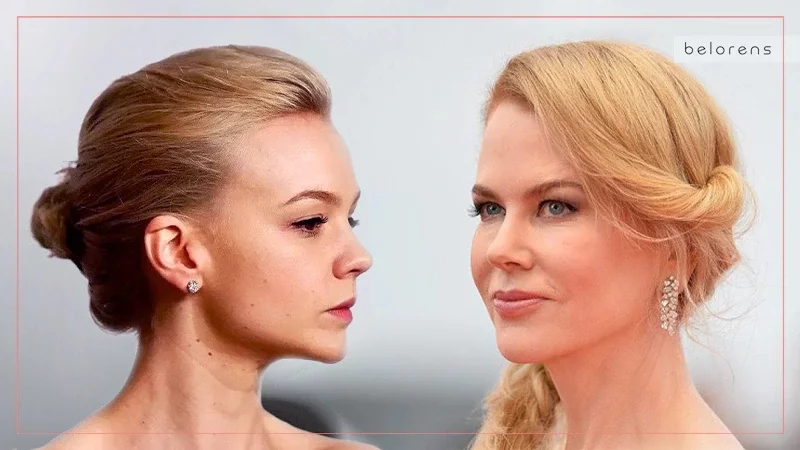
The celestial nose, also known as a turned-up nose, is a nose shape characterized by a pronounced upward tilt at the tip. It is named after its resemblance to the nose often depicted in celestial beings or cherubs, giving it an ethereal and angelic quality. The celestial nose adds a unique and whimsical touch to one's facial features.
The defining feature of the celestial nose is the noticeable upward direction of the nasal tip. The tip of the nose is slightly rotated or curved upward, creating an uplifted appearance. This upward tilt can vary in degree, from subtle to more pronounced, depending on the individual.
The celestial nose adds a playful and perky element to the face. Its upward orientation can create a sense of youthfulness and vivacity. This nose shape often imparts a sense of lightheartedness and joy, contributing to a friendly and approachable facial expression.
The celestial nose has a certain enchanting quality that draws attention and adds character to one's appearance. It can complement other facial features, creating a sense of harmony and balance. The distinctiveness of the celestial nose can make an individual's face memorable and captivating.
It's important to note that the celestial nose can be found in individuals of different ethnicities and races. While it may be more commonly associated with certain cultures, its presence across diverse populations showcases the beauty and uniqueness of nose shapes around the world.
The celestial nose is a reminder of the delightful and magical aspects of human features. Its turned-up tip brings a touch of charm and whimsy to the face, contributing to the overall attractiveness and individuality of each person. Whether it be a subtle or more pronounced upward tilt, the celestial nose captures the imagination and radiates a sense of joy and enchantment.
Also Read: Celebrity nose jobs
Hawk or Eagle Nose
- The hawk or eagle nose stands out with its prominent, sharp bridge that curves downward.
- Evoking a sense of strength and authority, this nose shape can exude a commanding and confident presence.

The hawk or eagle nose, also known as an aquiline nose, is a distinctive nose shape characterized by a prominent and pronounced bridge that curves downward. This nose shape draws inspiration from the beak of a hawk or an eagle, exuding a strong and commanding presence.
The defining feature of the hawk or eagle nose is the prominent bridge. It is usually high and straight, extending from the root of the nose to the tip in a pronounced curve. This downward curve can vary in degree, ranging from subtle to more prominent, creating a unique and striking facial profile.
The hawk or eagle nose is often associated with strength, power, and authority. Its commanding appearance can add a sense of regality and confidence to an individual's features.
This nose shape can create an aura of assertiveness and determination, capturing attention and leaving a lasting impression.
While the hawk or eagle nose has historical associations with nobility and leadership, it is important to note that it can be found across different ethnicities and races. It is a testament to the diverse beauty and uniqueness of human features.
The hawk or eagle nose adds character and distinctiveness to the face. Its pronounced bridge and downward curve can create a sense of balance and harmony with other facial features. This nose shape often enhances the overall facial profile, contributing to a striking and memorable appearance.
Straight or Columnar Nose
- The straight or columnar nose is characterized by a straight bridge from the root to the tip.
- This symmetrical and balanced nose shape often portrays a sense of elegance and classic beauty.
The straight or columnar nose is a nose shape characterized by a straight bridge that extends from the root to the tip without significant curves or angles. It is known for its clean and symmetrical appearance, often conveying a sense of elegance and classic beauty.
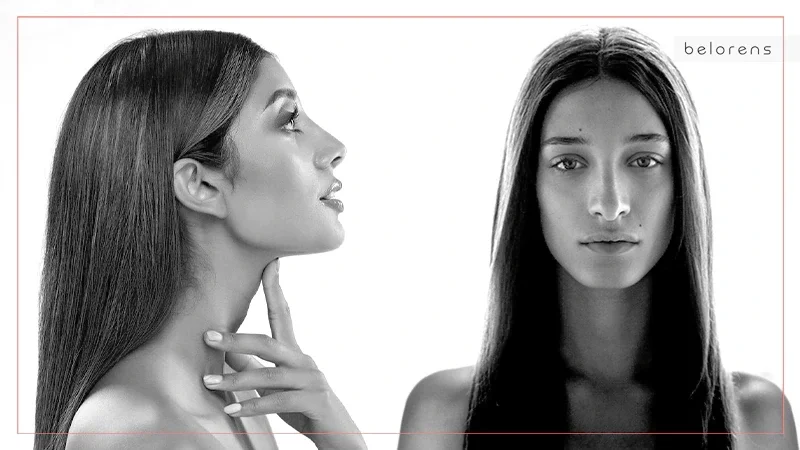
The defining feature of the straight or columnar nose is its linear structure. The bridge of the nose maintains a straight and uniform shape, providing a distinct vertical line from top to bottom. This straightness can be observed from a frontal view as well as in profile.
This nose shape is often associated with balance and symmetry. The straight bridge creates a sense of harmony with other facial features, contributing to an overall pleasing aesthetic. It imparts a sense of order and proportion, drawing attention to the natural symmetry of the face.
The straight or columnar nose has a timeless quality to it. It is a nose shape that transcends trends and can be found in individuals from various ethnicities and cultural backgrounds. Its simplicity and elegance make it a versatile and universally appealing feature.
While it may not possess the dramatic curves or angles of other nose shapes, the straight or columnar nose is highly regarded for its refined appearance. It is often seen as an epitome of classic beauty and can add an air of sophistication to the face.
The straight or columnar nose serves as a reminder that beauty comes in various forms, and sometimes, simplicity can have a profound impact. Its straight bridge and symmetrical design contribute to the overall facial balance, enhancing the natural features and radiating a sense of timeless charm and grace.
Also see: Discover top rhinoplasty doctors in various locations
Flat or Wide Nose
- The flat or wide nose features a broad base and a relatively flat bridge.
- Common in various ethnicities, such as African, African-American, and Afro-Caribbean, this nose shape showcases the beauty of diverse features.
-
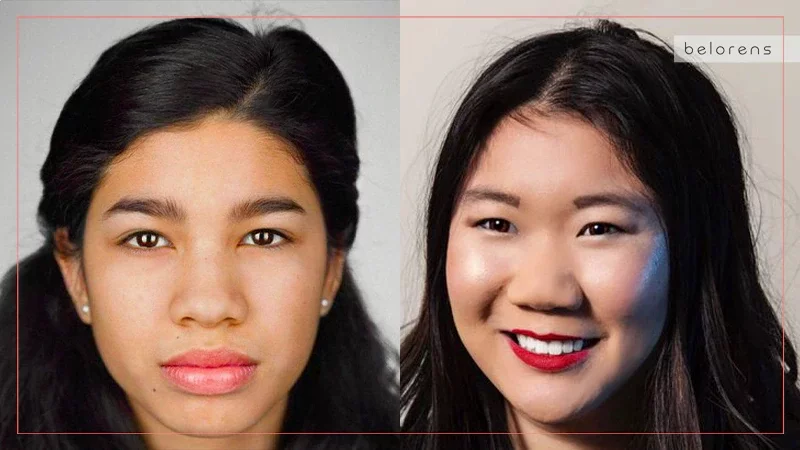
The flat or wide nose is a nose shape characterized by a broad nasal base and a relatively flat bridge. It is commonly found in various ethnicities, including individuals of African, African-American, Afro-Caribbean, Southeast Asian, and Indigenous descent. The flat or wide nose showcases the beauty of diversity and represents a distinct feature within the rich tapestry of human nose shapes. The defining feature of the flat or wide nose is the broad nasal base. The nostrils are often wider and more horizontally oriented compared to other nose shapes. The bridge of the nose appears flatter, lacking significant height or curvature.
This nose shape is believed to have evolved as an adaptation to warm and humid climates. The wider nostrils and flatter bridge are thought to enhance respiratory efficiency, allowing for increased airflow and improved heat exchange in regions with higher temperatures.
The flat or wide nose has unique beauty and cultural significance. It is celebrated in various communities and ethnicities, as it represents a connection to heritage and ancestral roots. This nose shape is often considered a symbol of pride and identity, reflecting the diversity and richness of different cultural traditions.
It's important to recognize that the flat or wide nose can exhibit variations within individuals and across ethnicities. While it is more commonly associated with specific populations, it can also be found in individuals from different backgrounds, illustrating the complexity and diversity of human features.
Nubian Nose
- The Nubian nose is characterized by a broad nasal base and a longer bridge, often associated with individuals of African descent, particularly those with roots in the Nile Valley region.
- The Nubian nose exhibits a unique blend of curves and angles, with a combination of softness and prominence, giving it a distinctive and eye-catching appearance.
The Nubian nose is a distinctive nose shape that is commonly found among individuals of African descent, particularly those with roots in the Nile Valley region, including Sudan and Egypt. Named after the Nubian people, who historically inhabited this region, the Nubian nose is celebrated for its unique and beautiful characteristics.

The defining feature of the Nubian nose is its broad nasal base and longer bridge. The nose tends to be wider in width, with a broad and horizontally oriented nasal base. The bridge, while longer compared to some other nose shapes, maintains a natural curve that seamlessly connects to the tip.
The Nubian nose showcases natural beauty and exudes a sense of strength and authenticity. It embodies a unique blend of curves and angles, with a combination of softness and prominence. The wider base and longer bridge contribute to its distinctiveness and set it apart from other nose shapes.
The Nubian nose is regarded as a symbol of African heritage and cultural identity. It represents a connection to ancestral roots and carries historical and cultural significance. Within African communities, the Nubian nose is often celebrated as a symbol of beauty, strength, and resilience.
It's important to note that the Nubian nose, like other nose shapes, can exhibit variations within individuals and across different populations. Nose shapes are influenced by a combination of genetic factors and individual characteristics, leading to unique and diverse features even within a specific nose shape category.
The Nubian nose represents the beauty of diversity and the rich tapestry of human features. It is a reminder of the varied and remarkable nose shapes that exist within different ethnicities, highlighting the unique traits and heritage of individuals. Embracing and appreciating the Nubian nose promotes inclusivity and celebrates the beauty that arises from our differences.
Also Read: How to tell if someone had rhinoplasty
Bulbous Nose
- A bulbous nose is characterized by a rounded, fleshy, and enlarged appearance, particularly at the nasal tip.
- The nasal tip of a bulbous nose lacks definition and may have a soft and rounded shape, contributing to the overall bulb-like appearance of the nose.
The bulbous nose, or boxy nose, is a nose shape characterized by a rounded, fleshy, and enlarged appearance, particularly at the nasal tip. It is often referred to as a "bulbous" nose due to its resemblance to a bulb or rounded shape.
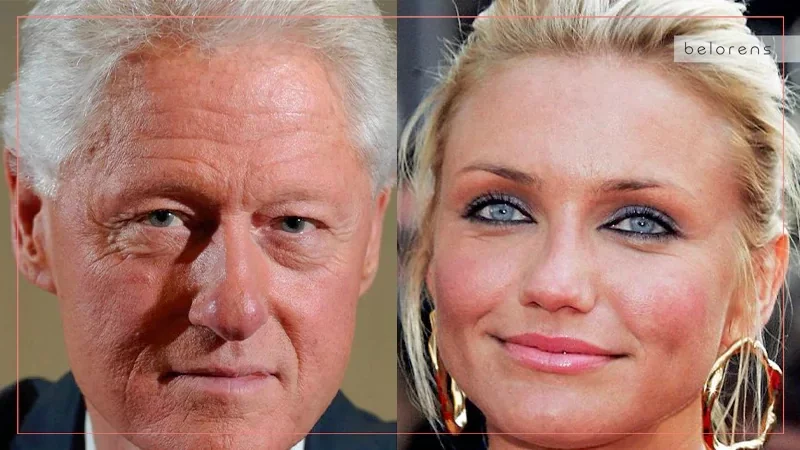
The defining feature of the bulbous nose is the fullness and volume of the nasal tip. The tip of the nose appears larger and more rounded compared to other nose shapes. It can be the result of thicker nasal skin, excess cartilage, or a combination of both. The nasal bridge may also be broader or have a less defined contour.
Individuals with a bulbous nose may find that their nose occupies a prominent space on their face. The rounded nasal tip can draw attention and be a distinguishing feature. Despite being described as "bulbous," this nose shape can possess its own unique beauty and charm.
It's important to note that the bulbous nose can vary in appearance and may be influenced by genetic factors as well as individual characteristics. The degree of bulbosity can range from subtle to more pronounced, with variations in size and shape across different individuals.
While the bulbous nose may not conform to traditional ideals of a slim or narrow nose, it carries its own appeal. It can exude a sense of warmth, approachability, and softness. In some cultures, a bulbous nose is considered a sign of good fortune or prosperity.
It's essential to embrace and celebrate the diversity of nose shapes, including the bulbous nose. Each nose shape contributes to the uniqueness of an individual's appearance and tells a story of their heritage and identity. Beauty is not limited to a specific mold, and the bulbous nose serves as a reminder that there is beauty in all forms and features.
Also Read: All Aesthetic Nose Concerns and Their Solutions
Nose Shapes in Different Ethnicities
Within the diverse landscape of nose shapes, different ethnicities possess their own unique characteristics. From the majestic slopes of a Roman or aquiline nose, symbolizing strength and nobility, to the soft curves of a Nubian nose, exuding natural beauty, each ethnic group has a distinct nose shape that reflects their genetic heritage and cultural identity. By understanding and appreciating these
variations, we gain a deeper appreciation for the tapestry of human existence and the remarkable individuality that defines us.
Through this exploration, we not only unveil the fascinating array of nose shapes but also foster a greater understanding and acceptance of the diverse features that make each ethnic group exceptional. So, let us embark on this captivating journey, as we unravel the stories behind the nose shapes that have been shaped by genetics, influenced by geography, and celebrated within the rich tapestry of ethnicities across the globe.
African Nose Shape
The term "African nose" is a broad description that encompasses the diverse range of nose shapes found among individuals of African descent. It is important to note that Africa is a vast continent with a rich variety of ethnic groups and genetic backgrounds, resulting in a wide spectrum of nose shapes within its populations.
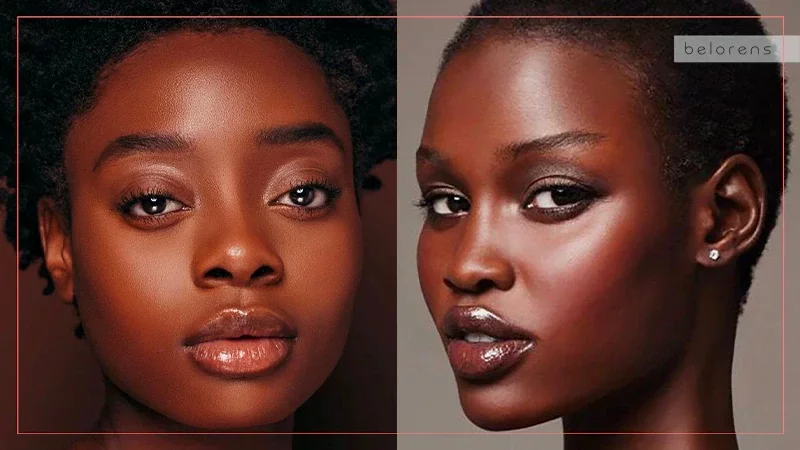
While it is challenging to generalize the African nose, there are certain characteristics that can be observed in many individuals of African descent. These features often reflect adaptations to the local climate and environment.
One common characteristic of the African nose is a broader nasal base. The nostrils tend to be wider and more horizontally oriented compared to some other ethnicities. This wider nasal base is believed to have evolved to facilitate better airflow and enhance respiratory efficiency in warm and humid climates.
In addition to a wider nasal base, the African nose often exhibits a broader nasal bridge and a lower nasal profile. The bridge can be flatter, with less prominence compared to some other nose shapes. The nasal tip can vary, ranging from rounded to more angular, depending on the specific ethnic group.
It's important to recognize that nose shapes can vary significantly within African populations. The diversity within Africa is vast, and various ethnicities have their own distinct nose shapes, influenced by genetics, geography, and cultural heritage.
The Nubian nose is a specific nose shape often associated with individuals of African descent, particularly those with roots in the Nile Valley region, including Sudan and Egypt. It is characterized by a broad nasal base and a longer bridge. The Nubian nose showcases unique features that set it apart within the broader spectrum of African nose shapes.
While the Nubian nose can be considered an African nose shape, it is important to understand that not all individuals of African descent have a Nubian nose. The diversity within Africa's populations is vast, and various ethnic groups have their own distinct nose shapes that may differ from the Nubian nose.
Within Africa, there is a wide range of nose shapes, including noses with different widths, lengths, and bridge heights. Nose shapes can also vary within specific ethnic groups due to genetic and environmental factors.
Also Read: All You Need to Know About Skin Tone and Undertone
Asian Nose Shape
Asia is a diverse continent with numerous ethnicities, each with their own unique features. While it is challenging to generalize, there are certain characteristics that are commonly associated with Asian nose shapes.
In general, Asian nose shapes tend to exhibit certain features such as a relatively flatter and wider nasal bridge compared to other ethnic groups. It is often less pronounced in Asian nose shapes, giving a more subtle and blended appearance.

The nostrils in Asian nose shapes may appear more rounded or broader compared to some other ethnicities. They are often positioned horizontally or slightly upward, contributing to the overall aesthetic of the nose.
The nasal tip in Asian nose shapes can vary, ranging from more rounded and soft to more projected and defined. The projection and definition of the tip may differ depending on the specific ethnic group within Asia.
It is important to note that these characteristics can vary among individuals and across different Asian ethnicities. The nose shapes found in East Asia, Southeast Asia, South Asia, and other regions of the continent can exhibit distinct variations influenced by genetic, cultural, and environmental factors.
East Asian Nose Shape
The term "East Asian nose shape" refers to the diverse range of nose shapes found among individuals of East Asian descent, including Chinese, Japanese, Korean, and other ethnicities. While it's important to acknowledge that nose shapes can vary widely within this category, there are certain characteristics that are often associated with East Asian nose shapes:
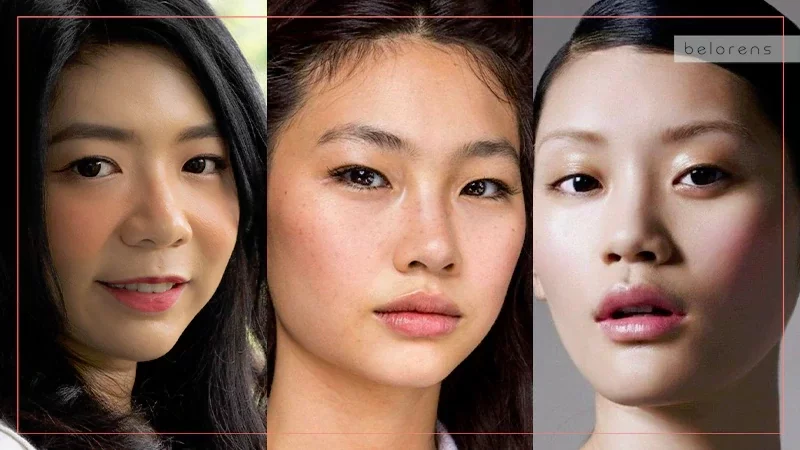
Straight or Slightly Curved Nasal Bridge: East Asian nose shapes often feature a straight or gently curved nasal bridge. This can create a smooth and harmonious profile.
Moderate Width and Proportions: East Asian noses tend to exhibit a moderate width, with nostrils that are horizontally oriented or slightly upturned. The nose is often proportionate to the other facial features, contributing to a balanced appearance.
Diverse Nasal Tip Shapes: The nasal tip in East Asian nose shapes can vary, ranging from softly rounded to more defined. The tip projection and shape may differ depending on the individual's ethnic background.
Less Pronounced Nasal Bridge Height: Compared to some other ethnicities, East Asian nose shapes may
have a lower nasal bridge height. This characteristic can contribute to the unique aesthetic of the nose.
It's important to note that these characteristics are generalizations, and individual variations within the East Asian population are extensive.
European Nose Shape
Europe is home to various ethnicities and populations, each with their own unique characteristics. It is important to note that nose shapes can vary significantly within this category, and generalizations may not apply to every individual.
With that said, there are certain characteristics commonly associated with European nose shapes. The nasal bridge in European noses often exhibits a more prominent and defined appearance compared to some other ethnic groups. It can have a straight or slightly curved profile, creating a distinct line from the root to the tip.
The nasal tip in European noses can vary in shape and projection. It may be more defined and refined, with a variety of forms such as rounded, pointed, or slightly upturned. The tip can contribute to the overall aesthetic and individuality of the nose.

European noses also tend to exhibit a moderate to narrow width, with nostrils that are often positioned horizontally or slightly downward. However, it is important to note that there is significant variation within European populations, and nose shapes can differ depending on the specific ethnic group and geographic region. To be more specefic, let’s have a look at the typical characteristics of the nose shapes in some parts of Europe.
Eastern European Nose Shape
Eastern European nose shapes often exhibit a moderate width and a straight or slightly curved bridge, with a nasal tip that can range from softly rounded to more defined.
In general the term "Eastern European nose" isn't a singular, definitive shape as the Eastern European region is home to numerous ethnicities, cultures, and genetic backgrounds, each with a variety of facial features.
The region includes countries like Russia, Poland, Ukraine, the Czech Republic, Slovakia, and several others. Each nation has a diverse population with a wide range of facial features.
Russian Nose Shape
Spanning Eastern Europe and northern Asia, Russia's vast territories have birthed a lot of facial features, with the nose being a distinct hallmark of its genetic diversity.
Among many Russians, a commonly observed nose shape showcases a straight bridge complemented by a slightly bulbous or rounded tip. The nostrils often lean towards being narrow. A distinctive trait in some is a subtle dip between the forehead and the bridge, reminiscent of the "Roman" or "aquiline" nose. This characteristic, though not exclusive to Russians, is indeed prevalent among them. Furthermore, many Russians possess a straight or subtly curved bridge with a refined nasal tip that subtly upturns, adding to their unique elegance.

However, Russia's extensive history and geography mean it's a mosaic of ethnicities. As one traverses through Russia, especially regions closer to Central Asia and the Caucasus, the influence of Mongol, Turkic, Uralic, and Caucasian genes becomes evident.
German Nose Shape
Among many Germans, a commonly observed nose shape features a well-defined, straight bridge culminating in a moderately rounded tip. This prominent bridge bestows the nose with a robust appearance. Typically, the nostrils are of average size, neither particularly narrow nor wide, and they align harmoniously with the overall facial structure. The bridge of the German nose often takes a straight or gently curved form, maintaining a moderate width, while the nasal tip can vary from being softly rounded to slightly pointed.
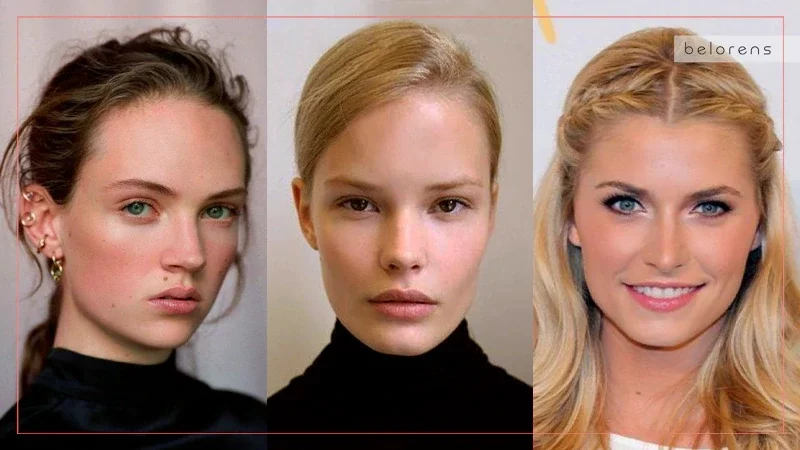
Another distinct attribute associated with the German nose is its breadth, especially noticeable at the base. However, this broadness should not be mistaken for flatness; it rather denotes an expansive structure that lends the face a pronounced profile.
Italian Nose Shape
Italian nose shapes are notably distinct, often characterized by a prominent bridge with a slight curve or bend that imparts a distinguished profile. The nasal tip is typically more pronounced, descending gracefully, while the nostrils sit high. Although there is a commonality in the straight or gently curved bridge and its moderate width, the nasal tip can vary, ranging from softly rounded to slightly projected.
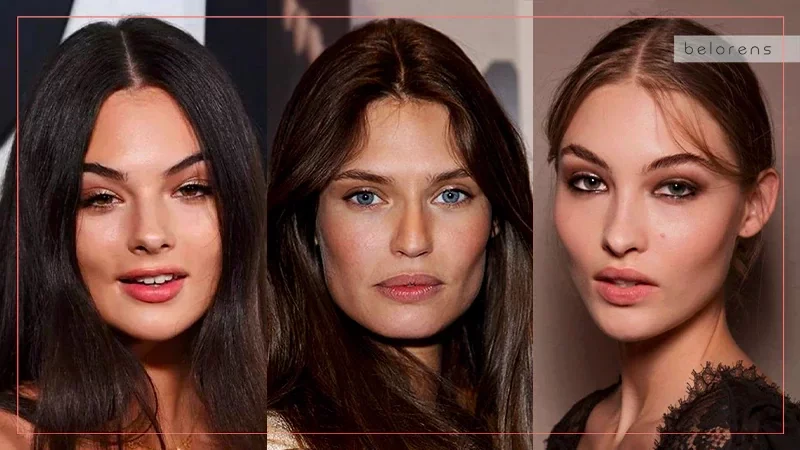
Beyond the physical attributes, the Italian nose holds narratives of ancient Roman legions, Renaissance maestros, and myriad civilizations that graced the Italian peninsula. It's essential to underscore that while certain features may recur, the beauty of Italy is mirrored in the diversity of its people, each bearing unique features.
French Nose Shape
The French nose, often emblematic of the nation's elegance and subtlety, mirrors many facets of their renowned culture. Characteristically, it boasts a straight bridge which may gently curve towards the end, culminating in a refined tip. This is accompanied by well-proportioned nostrils, neither overly wide nor constricted, blending seamlessly with the facial contours. Further delineating its distinctiveness, the French nose often displays a straight or subtly curved bridge, complemented by its moderate width. The nasal tip, refined in its demeanor, may also possess a slight upturn, adding to its classic and graceful visage.
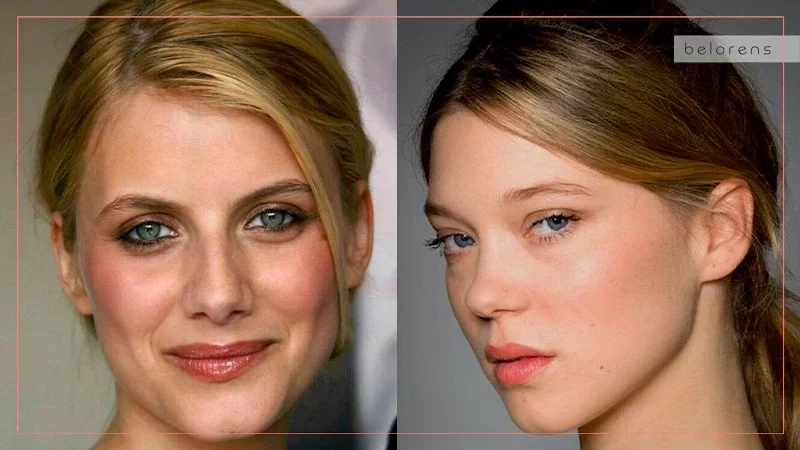
Yet, France's geographical, stretching from the radiant Mediterranean shores to the pastoral beauty of Brittany and Normandy, ensures a diverse palette of nose shapes. While many align with the previously described straight bridge, others might adopt a more pronounced aquiline or perky upturned silhouette. These varied nose structures echo the history of France, reminiscent of tales from Gaulish forefathers, medieval knights, and transformative revolutions that sculpted the France we know today.
Launch a nose topic & see what others think: Community on Rhinoplasty
Scottish Nose Shape
Many Scottish noses are marked by a strong bridge, which can be slightly wavy or possess a gentle hump, culminating in a pronounced tip. The nostrils, typically of medium size, harmoniously align with the nose's overall structure and the other facial features. Scottish nose shapes can vary, with some presenting a straight or subtly curved bridge and a moderate to narrow width. Additionally, the nasal tip may manifest as softly rounded or slightly upturned.
The width of the Scottish nose ranges from moderate to broad, imparting a sturdy and defined profile to the face. This breadth, while noticeable, doesn't imply flatness but denotes a unique contour adding depth and character.
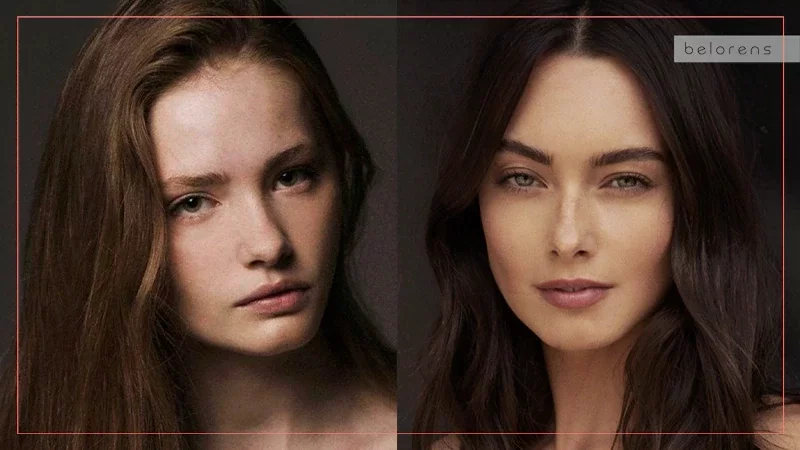
Clans and the historical mingling of diverse groups, from the Picts and Celts to Norse invaders, have led to a broad spectrum of nose shapes. While some noses might adopt a more aquiline silhouette, others could showcase slightly upturned or flatter profiles.
Scandinavian Nose Shape
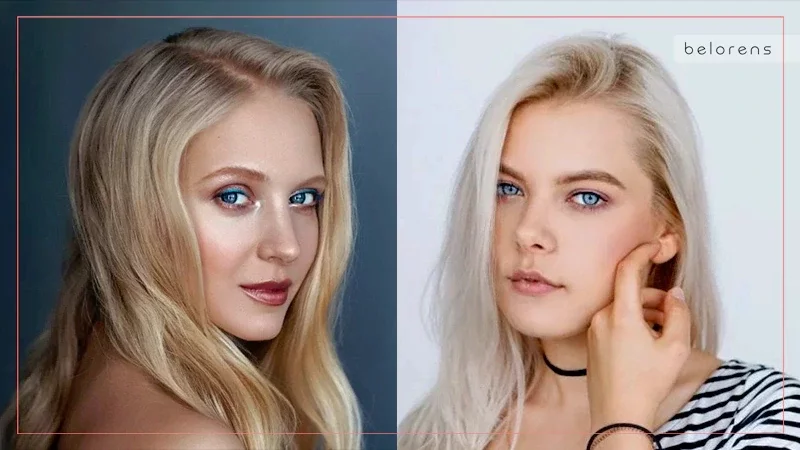
Scandinavian nose shapes often feature a straight or gently curved bridge, with a moderate width and a nasal tip that may be refined and slightly upturned, reflecting a sense of elegance and natural beauty.
Caucasian Nose Shape
The term "Caucasian nose" is a broad description that encompasses the nose shapes found among individuals of Caucasian or European descent. It is important to note that there is significant variation in nose shapes within this category, and generalizations may not apply to every individual.

Caucasian nose shapes can exhibit a range of characteristics. The nasal bridge often shows a moderate to pronounced height and can be straight or slightly curved. The bridge may provide a defined line from the root of the nose to the tip.
The nasal tip in Caucasian noses can vary in shape, ranging from softly rounded to more defined and projected. The tip can contribute to the overall aesthetic and individuality of the nose. The width of the nose can also vary, from moderate to narrow.
It's important to remember that these descriptions are generalizations and should not be taken as definitive representations of every individual within this group. Nose shapes can vary widely among individuals within the Caucasian population, and there is a rich diversity within this category.
Native American Nose Shape
It is important to recognize that Native American populations are incredibly diverse, with numerous tribes and ethnicities across different regions of the Americas. As such, there is significant variation in nose shapes within this category, and generalizations may not apply to every individual or tribe.

With that said, certain characteristics are sometimes associated with Native American nose shapes. These can include a moderate to broad nasal bridge, often with a straight or slightly curved profile. The width of the nose can vary, with some individuals displaying a broader nasal base.
The nasal tip in Native American nose shapes can vary in shape and projection, ranging from softly rounded to more defined. The nostrils may be horizontally oriented or slightly upturned, contributing to the overall aesthetic of the nose.
Middle Eastern Nose Shape
Middle Eastern populations are diverse, spanning numerous ethnicities, cultures, and geographic regions. Therefore, it is important to recognize that there is significant variation in nose shapes within this category, and generalizations may not apply to every individual.
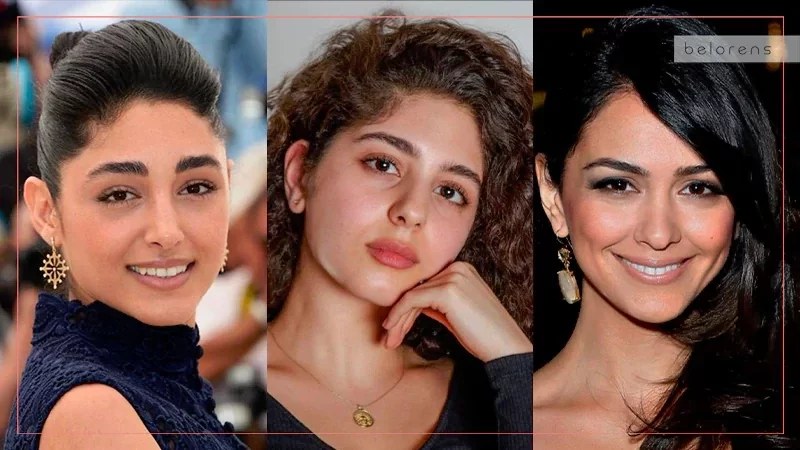
While it is challenging to generalize, there are certain characteristics that are sometimes associated with Middle Eastern nose shapes. These can include a moderate to prominent nasal bridge that may have a straight or slightly curved profile. The width of the nose can vary, with some individuals displaying a moderate to broad nasal base.
The nasal tip in Middle Eastern nose shapes can also vary in shape and projection. It may range from softly rounded to more defined or even slightly downturned. The nostrils may be horizontally oriented or slightly upturned, contributing to the overall aesthetic of the nose.
It's important to note that nose shapes within the Middle Eastern population can exhibit significant diversity. Various factors, such as genetics, cultural influences, and regional variations, can contribute to this diversity.
Arab Nose Shape
While it is challenging to provide a definitive description, there are certain characteristics that are sometimes associated with Arab nose shapes. These can include a moderate to prominent nasal bridge, often with a straight or slightly curved profile. The width of the nose can vary, with some individuals displaying a moderate to broad nasal base.
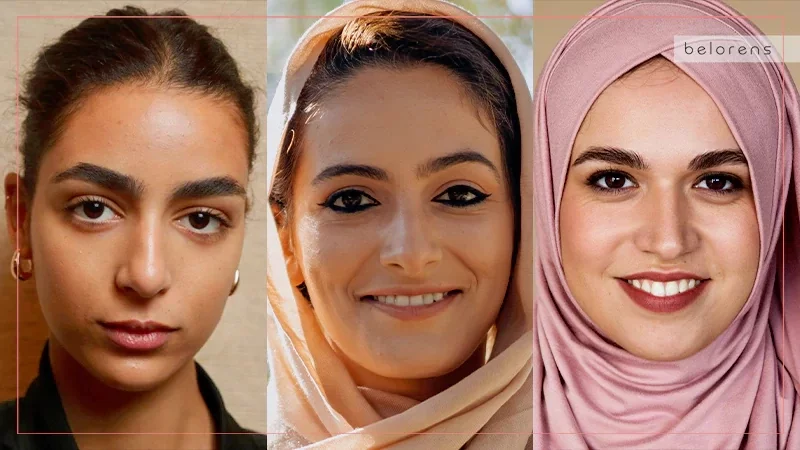
The nasal tip in Arab nose shapes can also vary, ranging from softly rounded to more defined or projected. The nostrils may be horizontally oriented or slightly upturned, contributing to the overall aesthetic of the nose.
Latino Nose Shape
Generalizations may not apply to every individual, and there is a wide spectrum of nose shapes within the Latino community.
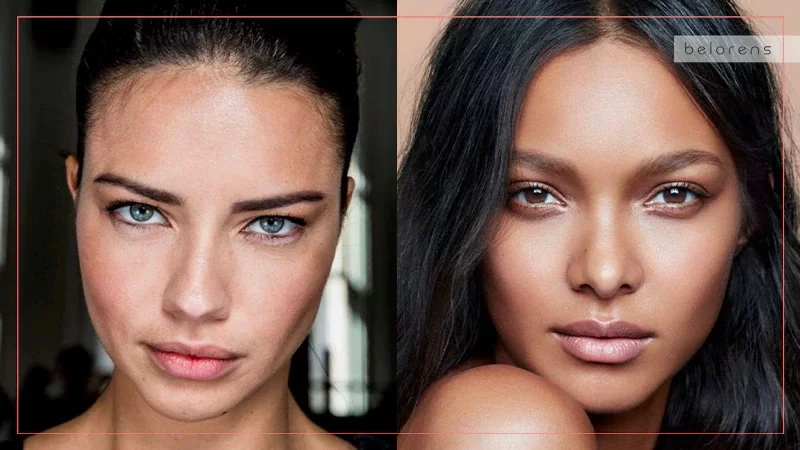
With that said, certain characteristics are sometimes associated with nose shapes among individuals of Latino descent. Latino nose shapes can exhibit a variety of features, including a range of nasal bridge heights, widths, and profiles.
In some cases, Latino nose shapes may feature a moderate to pronounced nasal bridge that can be straight or slightly curved. The width of the nose can also vary, ranging from moderate to broad. The nasal tip can display different shapes, ranging from softly rounded to more defined or projected. The nostrils may be horizontally oriented or slightly upturned, contributing to the overall aesthetic of the nose.
Last Word
It is important to recognize that nose shape is just one aspect of the incredible diversity of human features. Embracing and celebrating this diversity helps foster inclusivity and appreciation for the unique characteristics that contribute to the beauty and individuality of individuals from different backgrounds. It is crucial to approach these descriptions with sensitivity and recognize that nose shapes can differ significantly among tribes and individuals within different communities. Cultural and genetic factors, as well as regional variations, can influence nose shape diversity.
Also Read: Best Age to Have a Nose Job
FAQs
Can my nose shape be changed?
Surgical procedures such as rhinoplasty, commonly known as a "nose job," are commonly performed to alter the shape of the nose. Rhinoplasty can address issues like the size, shape, or proportion of the nose, as well as correct functional concerns such as breathing difficulties. During rhinoplasty, the surgeon reshapes the bone and cartilage of the nose to achieve the desired outcome.
Non-surgical methods can also help temporarily alter the appearance of the nose. For example, dermal fillers can be used to enhance the shape or contour of certain areas of the nose, such as filling in depressions or correcting asymmetry. However, it's important to note that these non-surgical options provide temporary results and need to be repeated periodically for maintenance.
Does your nose shape affect how a surgeon performs rhinoplasty for you?
Yes, your nose shape does play a significant role in how a surgeon performs rhinoplasty. Each person's nose has unique characteristics, including its shape, size, and structural components. These individual factors influence the surgical approach and techniques used during rhinoplasty.
During a rhinoplasty consultation, the surgeon will evaluate your nose's specific features and discuss your goals for the procedure. They will consider factors such as the shape of your nasal bridge, the size and position of the nasal tip, the width of the nostrils, and overall facial proportions.
Based on this assessment, the surgeon will develop a surgical plan tailored to your specific nose shape and desired outcomes. They will consider whether the nose needs to be reduced, augmented, reshaped, or have structural modifications to achieve the desired aesthetic or functional improvements.
The surgeon will take into account your nose's unique characteristics and work within the framework provided by your natural anatomy on nose. They will use their expertise to make adjustments that enhance the appearance and address any functional concerns while maintaining balance and harmony with your other facial features.
What is considered the “perfect” nose shape?
he concept of a "perfect" nose shape is subjective and can vary depending on cultural, societal, and personal preferences. Beauty standards and ideals regarding nose shape have evolved over time and differ across different cultures and regions.
That being said, there are some commonly recognized characteristics that are often associated with an aesthetically pleasing nose shape. These include:
Symmetry: A nose that is balanced and proportionate to the other facial features is often considered appealing.
Straight nasal bridge: A straight or gently curved bridge is often desired, as it can create a harmonious profile.
Defined nasal tip: A well-defined and proportionate nasal tip is often associated with an attractive nose shape.
Nasal proportions: The nose should be in balance with the rest of the face, with considerations of its length, width, and projection.
It is important to note that beauty is subjective, and what is considered "perfect" varies among individuals and cultures. Each person's unique facial features contribute to their individual beauty and character. It is crucial to embrace and appreciate the diversity of nose shapes and celebrate the beauty that arises from our differences.
Why do different people have different nose shapes?
People have different nose shapes due to a combination of genetic, evolutionary, and environmental factors. Here are some key factors that contribute to the diversity of nose shapes:
Genetic Variation: Nose shape is largely influenced by genetic factors. Genes determine the development of cartilage, bone, and soft tissue in the nose. Different genetic variations and combinations lead to the wide range of nose shapes observed in different individuals and populations.
Adaptation to Climate: The shape of the nose can be influenced by climate and environmental factors. For example, in warmer and more humid climates, noses with wider nostrils and larger nasal passages may be advantageous for increased airflow and better heat and moisture exchange. In colder climates, a narrower and more projecting nose may help warm and humidify the air.
Ethnic and Ancestral Heritage: Nose shape can be associated with specific ethnic or ancestral backgrounds. Different populations have distinct genetic variations that have been passed down through generations, resulting in characteristic nose shapes within those groups. However, it's important to note that nose shape is not a definitive indicator of one's ethnicity or ancestry, as there is a considerable overlap and diversity within and between populations.
Sexual Selection and Attractiveness: Nose shape can also be influenced by cultural and personal preferences for attractiveness. Different societies and cultures may have their own beauty ideals and aesthetic preferences, which can influence the perception of an attractive nose shape.



